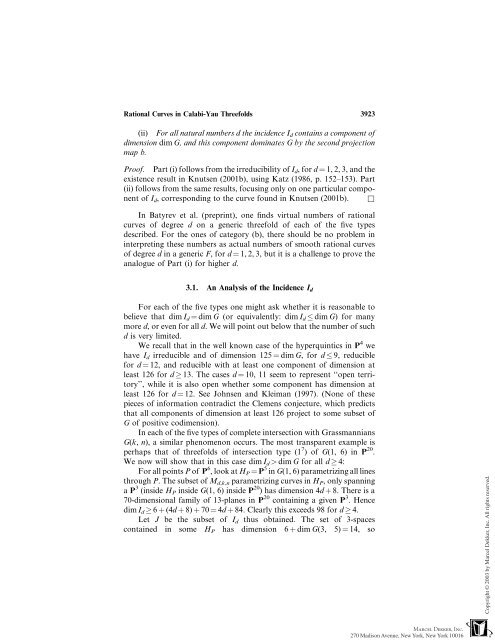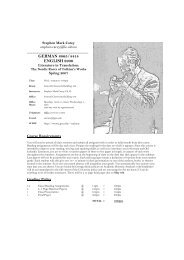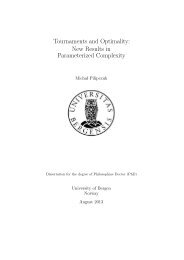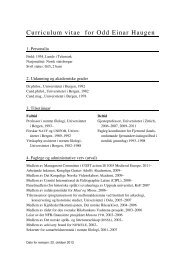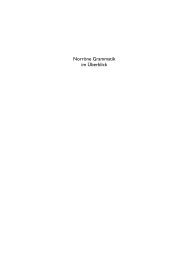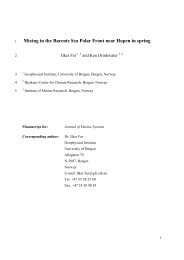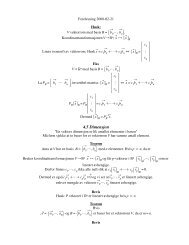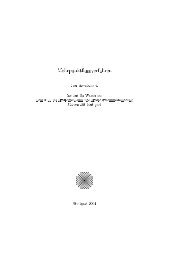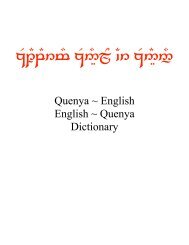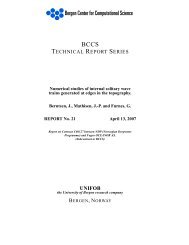Rational Curves in Calabi-Yau Threefolds
Rational Curves in Calabi-Yau Threefolds
Rational Curves in Calabi-Yau Threefolds
You also want an ePaper? Increase the reach of your titles
YUMPU automatically turns print PDFs into web optimized ePapers that Google loves.
<strong>Rational</strong> <strong>Curves</strong> <strong>in</strong> <strong>Calabi</strong>-<strong>Yau</strong> <strong>Threefolds</strong> 3923<br />
(ii) For all natural numbers d the <strong>in</strong>cidence Id conta<strong>in</strong>s a component of<br />
dimension dim G, and this component dom<strong>in</strong>ates G by the second projection<br />
map b.<br />
Proof. Part (i) follows from the irreducibility of Id, for d ¼ 1, 2, 3, and the<br />
existence result <strong>in</strong> Knutsen (2001b), us<strong>in</strong>g Katz (1986, p. 152–153). Part<br />
(ii) follows from the same results, focus<strong>in</strong>g only on one particular component<br />
of Id, correspond<strong>in</strong>g to the curve found <strong>in</strong> Knutsen (2001b). &<br />
In Batyrev et al. (prepr<strong>in</strong>t), one f<strong>in</strong>ds virtual numbers of rational<br />
curves of degree d on a generic threefold of each of the five types<br />
described. For the ones of category (b), there should be no problem <strong>in</strong><br />
<strong>in</strong>terpret<strong>in</strong>g these numbers as actual numbers of smooth rational curves<br />
of degree d <strong>in</strong> a generic F, for d ¼ 1, 2, 3, but it is a challenge to prove the<br />
analogue of Part (i) for higher d.<br />
3.1. An Analysis of the Incidence Id<br />
For each of the five types one might ask whether it is reasonable to<br />
believe that dim Id ¼ dim G (or equivalently: dim Id dim G) for many<br />
more d, or even for all d. We will po<strong>in</strong>t out below that the number of such<br />
d is very limited.<br />
We recall that <strong>in</strong> the well known case of the hyperqu<strong>in</strong>tics <strong>in</strong> P 4 we<br />
have I d irreducible and of dimension 125 ¼ dim G, for d 9, reducible<br />
for d ¼ 12, and reducible with at least one component of dimension at<br />
least 126 for d 13. The cases d ¼ 10, 11 seem to represent ‘‘open territory’’,<br />
while it is also open whether some component has dimension at<br />
least 126 for d ¼ 12. See Johnsen and Kleiman (1997). (None of these<br />
pieces of <strong>in</strong>formation contradict the Clemens conjecture, which predicts<br />
that all components of dimension at least 126 project to some subset of<br />
G of positive codimension).<br />
In each of the five types of complete <strong>in</strong>tersection with Grassmannians<br />
G(k, n), a similar phenomenon occurs. The most transparent example is<br />
perhaps that of threefolds of <strong>in</strong>tersection type (1 7 )ofG(1, 6) <strong>in</strong> P 20 .<br />
We now will show that <strong>in</strong> this case dim Id > dim G for all d 4:<br />
For all po<strong>in</strong>ts P of P 6 , look at HP ¼ P 5 <strong>in</strong> G(1, 6) parametriz<strong>in</strong>g all l<strong>in</strong>es<br />
through P. The subset of Md,k,n parametriz<strong>in</strong>g curves <strong>in</strong> HP, only spann<strong>in</strong>g<br />
a P 3 (<strong>in</strong>side HP <strong>in</strong>side G(1, 6) <strong>in</strong>side P 20 ) has dimension 4d þ 8. There is a<br />
70-dimensional family of 13-planes <strong>in</strong> P 20 conta<strong>in</strong><strong>in</strong>g a given P 3 . Hence<br />
dim I d 6 þ (4d þ 8) þ 70 ¼ 4d þ 84. Clearly this exceeds 98 for d 4.<br />
Let J be the subset of Id thus obta<strong>in</strong>ed. The set of 3-spaces<br />
conta<strong>in</strong>ed <strong>in</strong> some HP has dimension 6 þ dim G(3, 5) ¼ 14, so


